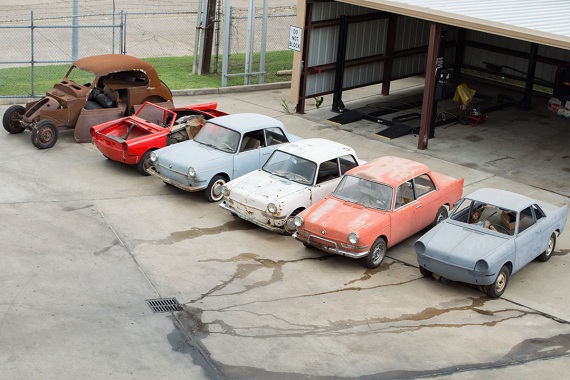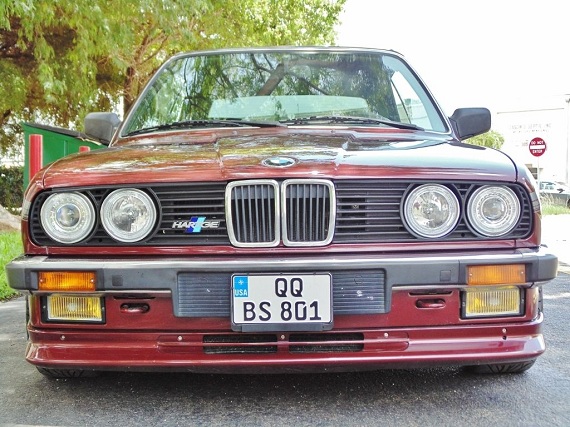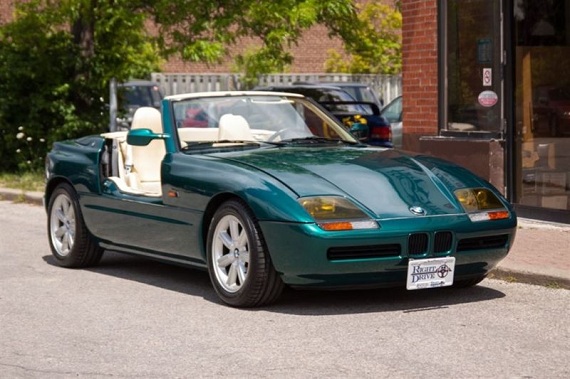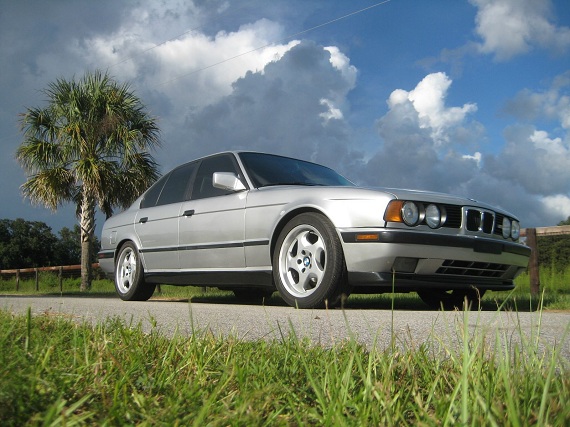If I’m honest, I’m not a huge fan of the entire E30 scene. I think it’s a bit overplayed, over-hyped and over-priced. Granted, they’re nice cars, but even though they’re slower I’d take a clean 4000 Quattro or Coupe GT over a 325i any day. There are two exceptions, though; the E30 M3 is of course a favorite of mine but firmly out of reach in any meaningful condition. The other exception is the Touring model – I’d love it if Audi had made a B2 quattro Avant, but they didn’t. Sure, there’s the Quantum Syncro wagon, but park one next to this 1988 325i Touring and for me the clear winner in looks is the BMW. In fact, it’s so much better looking to me than a Quantum, even the steering wheel on the “right” side wouldn’t bother me:
Tag: BMW
When considering a restoration project, many things factor into one’s decision. You need to first pick a model that you find particularly interesting or intriguing. For me, that includes choosing something a little outside the mainstream interests. It’s why I prefer the Audi V8 to the S4/S6, for example. It helps if it’s something that you can afford, as well – for example, you could decide to restore a very early 356 Porsche rather than a 911, but if you can’t afford to buy one it’s no good. Then you need to weigh parts availability and cost along with your restoration goals; will this be a driver, a survivor or a 100 point show car? The costs vary for each, as will the amount of detail work involved. For me, while I love to see pristine 100 point show cars, I prefer something that can be driven to the show and home. My Audi, for example, is certainly not pristine – but it also doubles as a track car, and with nearly a quarter million miles on the clock I’m proud of some of its battle scars even if they make me sigh from time to time. So, when something very unique pops up that has potential to be different, special and really stand out from the crowd, I take notice. The 2002ti turbo from Monday is a perfect example of this; a car that needs a tremendous amount of restoration but it really different than everything else out there. In that vein, here’s a collection of the rare, rear-engined BMW 700s in various configurations and states along with a WW2-era 321 chassis. Why limit yourself to only one project when you could have six?
CLICK FOR DETAILS: BMW 700 Collection on eBay
3 CommentsThe Hartge/Weismann modified European market 1987 325i convertible is back up on eBay with a reasonable price drop from $20,000 to $16,900. It’s still expensive, but considering the clean build with rare parts the price seems more in line now.
CLICK FOR DETAILS: 1987 BMW 325i Euro-Spec Hartge/Weismann on eBay
The below post originally appeared on our site July 22, 2014:
Comments closedFor some time, BMW has dared to look ahead towards the future; in the 1970s, BMW brought turbocharging to small sedans and even the idea of an efficient supercar. In the 1980s, BMW introduced the world to an entire range of sporting products with its M division – a blueprint which certainly all German, if not most manufacturers in general, follow today. More recently, BMW has pioneered “efficient dynamics” and brought the first realistic super-performance, ultra efficient car to the market with the i8. But in the 1990s, it was a different sort of revolution. BMW looked towards new technology in both electronic systems, manufacturing, car design and construction with its revolutionary 8 series and Z1. The E31 is a car well known to these pages, but as the Z1 was never imported to the U.S., it’s not a car that we often get to feature.
The Z1 was a complete departure for BMW; while they were not strangers to small cabriolets, their previous efforts were in the 1930s with the 315/1 and the 1960s with the 700. BMW went away from the idea of an integral body and frame to a separate chassis with removable, plastic body pieces. The idea was that the owners could replace the panels themselves to “repaint” the car with minimal effort. It was something the Smart car would be notable for – a car that launched a decade following the Z1. The doors didn’t open out – the slid down into the supporting chassis structure. In front was nothing new – the venerable M20 from the E30 popped up here, too – but in the rear the Z1 was new with a multi-link rear axle of its own. This new design would later be incorporated into the E36. It’s interesting that with the Z3 BMW opted to go the opposite route and incorporate earlier E30 pieces into the rear of the /7 and /8. While performance was relatively leisurely, the Z1 nevertheless garnered praise for its innovation, unique design and great looks:
CLICK FOR DETAILS: 1991 BMW Z1 on Kijiji
Comments closedThe ascension of the E30 M3 and subsequent increase in value of both the E28 M5 and E24 M6 have underscored the incredible value of the lone early 1990s BMW M survivor, the E34 M5. While purists may complain that the E34 was heavier and a more dulled experience than the E28 M5, I’ve always found the E34 to be an even better representation of the M experience. M cars were all about stealthy performance, and in my mind the E34 is the most stealthy M car produced. Another reason I like the E34 versus the E28 is the introduction of more colors than just black – in this case, this E34 is the same color combination as the first M5 I ever sat in; silver with grey leather:




